Basics of game design: 20 board games. Part seven and last: Nikoli puzzles, crosswords
The article by John Harris from the Fundamentals of Game Design series provides a detailed overview of the most popular board games, including traditional chess and go, role-playing like Call of Cthulhu, European ones like Colonialists, and many others who have a lot to learn.
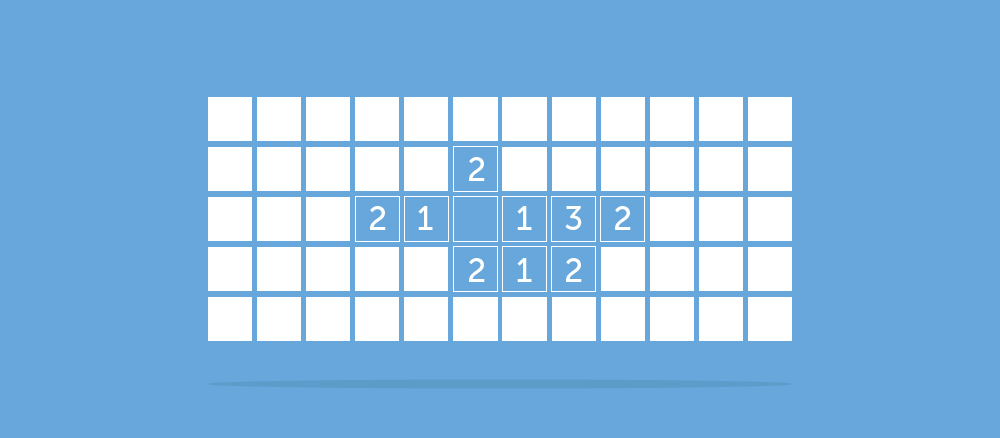
Previous articles in the series:
Go, chess, Parchis ,
Backgammon, monopoly, scrabble ,
Pente, Colonialists, Puerto Rico ,
Train ticket, Carcassonne, Colonialists ,
Munchkin, Contract Bridge, Arkham's Terror ,
Nuclear war, Paranoia, Call of Cthulhu .
')

Overview
Nikoli, the Japanese puzzle game, is famous for its interesting logical problems. And although he is not the immediate “parent” of sudoku puzzles, it is thanks to him that they have gained such popularity. In addition to them, in the magazine you can find a lot of great puzzles for every taste. All of them are a scheme that must be supplemented in one way or another in accordance with the task.
Well-designed puzzles of this type have only one solution. If the task is easy, it can be solved with the help of elementary logical conclusions. More complex tasks require a deep understanding of the rules, and the search for solutions is carried out by trial and error. The most difficult tasks, as a rule, can be solved either through experimentation or through sudden insight.
Everyone knows sudoku puzzles. For an example of tasks of this type, I stopped at a less popular puzzle called “The Wall of China”, which in Nikoli magazine is called Slitherlink (“sliding lines”). It seems to me that she also fits the name Loopy (“winding”), which is mentioned in Simon Tatham's (Tatham's Puzzle Collection) puzzle collection. The illustrations that I present in this article are taken from the adapted computer version, but the logic is exactly the same as in the “paper” original source. Each of the puzzles that are published in Nikoli is good in its own way, but the “Wall of China” seems to me the most suitable for exploring them.
The field of the “Chinese wall” is divided into squares by a network of dots; some of the squares contain numbers. To solve the puzzle you need to connect the points along the invisible lines of the field so that an inseparable loop of linear and rectangular segments is formed. With the correct solution of the puzzle, the squares containing the numbers will be surrounded by lines, the number of which is indicated in the center of each square. There is only one loop variant in which the given conditions are fulfilled, which in itself is a small hint.
Consider one easy task from the Simon Tatham puzzle collection. With proper practice, it can be solved in less than 3 minutes. What can you say about it?

First, the squares with the number 0 should not have visible borders. Squares with the number 3, in contrast, should be circled on three sides. Since the “three points” implies only one empty border, a square with the number 3 in the upper right corner should be circled around the edge - here we can draw either 2 corner lines or none.
A less obvious point: the lines must be present between two adjacent troika; in addition, another line should be drawn on either side of this “pair”. The line must be continuous, without any branches; if the line surrounds the square at a right angle, the remaining 2 sides of the square must be empty. All this, together with the obvious rules regarding the “ones”, “twos” and adjacent lines, allows us to begin to solve the problem as follows:
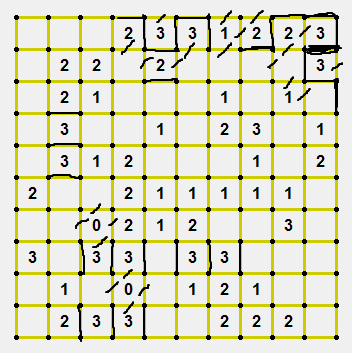
Filling the entire grid, starting from these sketches, is easy enough. More complex tasks require, in turn, a deeper understanding of the puzzle structure, the use of higher order patterns (such as, for example, the closed loop in the “China Wall”) and constant trial and error.
All of the above applies to sudoku in particular and most Nikoli puzzles in general. In essence, these tasks are of the same type. Once you understand the method of solving puzzles of the same type, you will be able to solve such problems up to the average level of complexity. To advance further, you will need to put more effort. But remember - even experts cannot immediately solve Sudoku of difficult levels.
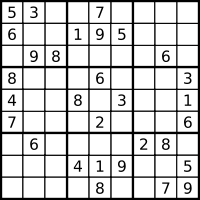
What can be learned from these puzzles?
Of particular interest to game developers are puzzles that have been successfully adapted to the computer versions. Besides the fact that sudoku plays a key role in the side story of the Nintendo Brain Age series of games, the open source Simon Tatham Puzzle Collection combines the game modules of many puzzles and very decent random task generators in one package.
On the pages of Nikoli you can find many ideas for puzzles, which are now very popular. This, as well as the excellent collection of sudoku and the interface for solving them, largely explains the popularity of the Brain Age series of games. In addition, elements of puzzles can be used as mini-games as part of games of other genres.
Additional materials:
Now Nikoli supports an English-language website with puzzles and instructions for solving them.
For a long time, Games Magazine was the lead puzzle periodical for the English-speaking audience, revealing the world to Will Shortz. In each issue there are pages with puzzles, among which you can find tasks by the type of those that Nikoli publishes.
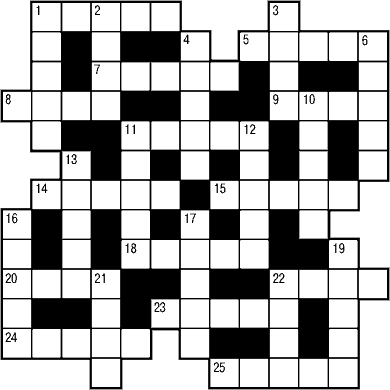
Overview
Unfortunately, crosswords are not very popular among gamers. But in reality, these are very difficult and very exciting puzzles, which require reading, a rich vocabulary, a flexible mind, and in some cases non-standard thinking. Even the most erudite people are puzzled over daily crossword puzzles from the New York Times. Beginning on Monday, the level of complexity is getting higher, and on Sunday, the real test awaits the readers.
All words in traditional crosswords cross horizontally and vertically. Thus, each word serves as a hint to the solution of the other. The initial cells in each row are labeled with numbers that indicate the definition of the hidden words. The definition list is next to the crossword puzzle grid.
It is thanks to the intersection of the words crossword - not just a set of puzzles, but a complete puzzle. If the player cannot solve the word, he can go in a roundabout way - solve cross-words and put down letters that will prompt him the correct answer. The creators of crosswords know about it and therefore try to complex words intersect with the lungs. But whatever one may say, even the most avid crossword puzzles can not always solve difficult problems on the move.
Crossword puzzles can be solved in two ways. First, you can fill in everything you know, and leave unknown words for later. Or you can choose a conditional area and gradually expand it, guessing adjacent words. In this case, each filled cell adds confidence in the correctness of the answers. And having solved the entire crossword completely, you can certainly get much more pleasure than if there are empty cells left on the field.
The basic mechanics of this puzzle is interesting in itself, but over the years, the compilers of the crossword puzzles have brought many new aspects to the game. Understanding them is as important as the basic rules. The basic principle that should be learned: the key to the word lies in the definition itself.
For example, a definition is often the same part of a speech as a hidden word, that is, they can be interchangeable in a sentence. If the definition is in the plural, then the word is probably made up in this form. If an abbreviation is present in the definition, then most likely the word is also an abbreviation. If the definition is written in slang or archaic language, you can be sure that the answer will correspond to the style of the puzzle. If the answer consists of several words, as a rule (but not always!), This will be stated in the definition. But above all, beware of definitions in interrogative form. This is a sure sign that the author of the crossword puzzle has prepared a trap for you in the form of a pun, homonyms or pun.
Sometimes you can find other tricks. If you see an atypical use of words in the definition, be alert: the answer can be formulated in the same way. Also it is necessary to take into account that in traditional crosswords, as a rule, it is forbidden to use one word several times - even in another grammatical form or in the definition of another word.
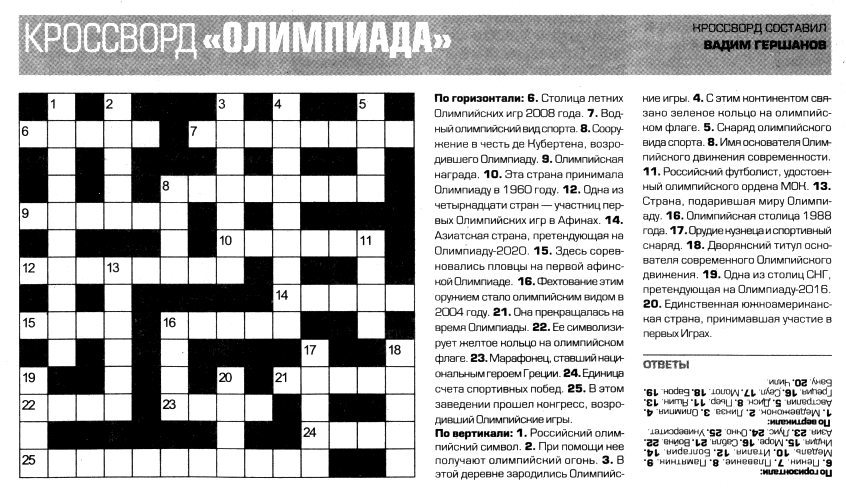
It is worth noting that in the British crossword puzzles, which in the USA are called “cryptograms”, much more tricks are used than in American counterparts. The ability to bypass these pitfalls comes with experience, and then they are no longer difficult.
In recent years, many thematic crossword puzzles have appeared, which, with a competent approach, can give the player additional clues. If the crossword has a title, then all the answers are united by a common topic. But sometimes even in nameless crosswords, the topic can be recognized by just a few definitions. As a rule, the longest words in a crossword (especially if they are stretched along the entire length of the field) contain a direct reference to a common theme.
Definitions can also overlap with each other. Crossword grids are almost always symmetrical, and mirrored words are often related to a common theme. It happens that crosswords go beyond the standard rules. For example, black cells are folded into a pattern, one definition corresponds to several words, or vice versa — several definitions have one answer.
Perhaps the most tricky version of the crossword puzzle is a rebus-crossword puzzle. In this puzzle, you can enter a number, symbol or even a whole word in one cell! Such exceptions are found only in thematic crosswords, and quite rarely. But beginner crossword puzzles need to be alert, because the rebus can be anywhere.
At first, this may seem unfair, but experienced players will not be surprised by the rebus. The main thing - to pay attention to the words that do not fit in the available number of cells. From my own experience I can say that when you find the encrypted rebus yourself and solve it, you get a special pleasure.
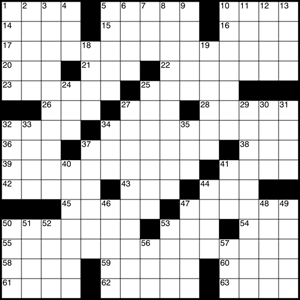
What can be learned from these puzzles?
The Nintendo DS console has at least 3 crossword puzzle collections: from the New York Times (recommended) and USA Today (noteworthy), as well as a collection of original crossword puzzles (the latest collection was released by Nintendo and, oddly enough, looks quite depressing against the rest games of this company). In addition, recently became available for download another collection of crosswords for the console DSi.
But do not think that the application with crosswords will bring you easy money. It is far from everyone to create such a puzzle. Most of the crossword puzzles in print and digital editions have a surprisingly narrow circle of authors who often use special software for this. If you start to really get involved in crossword puzzles, over time you will probably know the names of some compilers, and you can even distinguish between their styles.
Many games require certain knowledge from players. A good example of this is the Scrabble board game, which took on a lot of mechanics from crosswords. However, some developers seek to eliminate this factor from their games.
The cult computer game Nethack is often criticized for the fact that it leaves the player a chance to win if he is not well oriented in the game universe. Perhaps for some it is a minus. Maybe this really has a negative effect on the immersiveness and integrity of the game world, but the popularity of crossword puzzles has certainly not suffered from this.
Note
The rules in some of the games listed above (especially in European board games in previous articles) may differ depending on the edition or country of release. Therefore, when describing all the games, I was guided by the rules of the latest American editions.
Having written this article, I found an excellent series of videos called Board Games With Scott . If you want to learn more about board games, in particular about "Train Ticket" and "Puerto Rico", Scott Nicholson's video reviews are exactly what you need.
And finally, I remind you that the best place to explore board games is BoardGameGeek . This is the largest online portal dedicated to board games, where you can find answers to all your questions.

Previous articles in the series:
Go, chess, Parchis ,
Backgammon, monopoly, scrabble ,
Pente, Colonialists, Puerto Rico ,
Train ticket, Carcassonne, Colonialists ,
Munchkin, Contract Bridge, Arkham's Terror ,
Nuclear war, Paranoia, Call of Cthulhu .
')
Nikoli puzzles
Publisher: Nikoli
Type: logic puzzles to solve alone
Level of difficulty: moderate to high
Creators: different authors
Luck factor: none
Description: A series of puzzles that are published in the Japanese puzzle magazine Nikoli. Sudoku is also one of the complex logical tasks of this type. If you know the algorithms for solving such puzzles, there is nothing complicated in them, but in this case the most interesting is the process of finding a solution.

Overview
Nikoli, the Japanese puzzle game, is famous for its interesting logical problems. And although he is not the immediate “parent” of sudoku puzzles, it is thanks to him that they have gained such popularity. In addition to them, in the magazine you can find a lot of great puzzles for every taste. All of them are a scheme that must be supplemented in one way or another in accordance with the task.
Well-designed puzzles of this type have only one solution. If the task is easy, it can be solved with the help of elementary logical conclusions. More complex tasks require a deep understanding of the rules, and the search for solutions is carried out by trial and error. The most difficult tasks, as a rule, can be solved either through experimentation or through sudden insight.
Everyone knows sudoku puzzles. For an example of tasks of this type, I stopped at a less popular puzzle called “The Wall of China”, which in Nikoli magazine is called Slitherlink (“sliding lines”). It seems to me that she also fits the name Loopy (“winding”), which is mentioned in Simon Tatham's (Tatham's Puzzle Collection) puzzle collection. The illustrations that I present in this article are taken from the adapted computer version, but the logic is exactly the same as in the “paper” original source. Each of the puzzles that are published in Nikoli is good in its own way, but the “Wall of China” seems to me the most suitable for exploring them.
The field of the “Chinese wall” is divided into squares by a network of dots; some of the squares contain numbers. To solve the puzzle you need to connect the points along the invisible lines of the field so that an inseparable loop of linear and rectangular segments is formed. With the correct solution of the puzzle, the squares containing the numbers will be surrounded by lines, the number of which is indicated in the center of each square. There is only one loop variant in which the given conditions are fulfilled, which in itself is a small hint.
Consider one easy task from the Simon Tatham puzzle collection. With proper practice, it can be solved in less than 3 minutes. What can you say about it?

First, the squares with the number 0 should not have visible borders. Squares with the number 3, in contrast, should be circled on three sides. Since the “three points” implies only one empty border, a square with the number 3 in the upper right corner should be circled around the edge - here we can draw either 2 corner lines or none.
A less obvious point: the lines must be present between two adjacent troika; in addition, another line should be drawn on either side of this “pair”. The line must be continuous, without any branches; if the line surrounds the square at a right angle, the remaining 2 sides of the square must be empty. All this, together with the obvious rules regarding the “ones”, “twos” and adjacent lines, allows us to begin to solve the problem as follows:

Filling the entire grid, starting from these sketches, is easy enough. More complex tasks require, in turn, a deeper understanding of the puzzle structure, the use of higher order patterns (such as, for example, the closed loop in the “China Wall”) and constant trial and error.
All of the above applies to sudoku in particular and most Nikoli puzzles in general. In essence, these tasks are of the same type. Once you understand the method of solving puzzles of the same type, you will be able to solve such problems up to the average level of complexity. To advance further, you will need to put more effort. But remember - even experts cannot immediately solve Sudoku of difficult levels.

What can be learned from these puzzles?
Of particular interest to game developers are puzzles that have been successfully adapted to the computer versions. Besides the fact that sudoku plays a key role in the side story of the Nintendo Brain Age series of games, the open source Simon Tatham Puzzle Collection combines the game modules of many puzzles and very decent random task generators in one package.
On the pages of Nikoli you can find many ideas for puzzles, which are now very popular. This, as well as the excellent collection of sudoku and the interface for solving them, largely explains the popularity of the Brain Age series of games. In addition, elements of puzzles can be used as mini-games as part of games of other genres.
Additional materials:
Now Nikoli supports an English-language website with puzzles and instructions for solving them.
For a long time, Games Magazine was the lead puzzle periodical for the English-speaking audience, revealing the world to Will Shortz. In each issue there are pages with puzzles, among which you can find tasks by the type of those that Nikoli publishes.
Crosswords
Traditional puzzle
Type: Single Player Verbal Puzzle
Difficulty: low to high
Creator: Arthur Winn (authorship of an earlier version attributed to Giuseppe Ayroldi)
Luck factor: none
Description: absolute champion among puzzles. A crossword puzzle is a grid of intersecting rows of empty cells that need to be filled with words for given values. Words can be entered from left to right (horizontally) and from top to bottom (vertically). But everything is not as simple as it seems.

Overview
Unfortunately, crosswords are not very popular among gamers. But in reality, these are very difficult and very exciting puzzles, which require reading, a rich vocabulary, a flexible mind, and in some cases non-standard thinking. Even the most erudite people are puzzled over daily crossword puzzles from the New York Times. Beginning on Monday, the level of complexity is getting higher, and on Sunday, the real test awaits the readers.
All words in traditional crosswords cross horizontally and vertically. Thus, each word serves as a hint to the solution of the other. The initial cells in each row are labeled with numbers that indicate the definition of the hidden words. The definition list is next to the crossword puzzle grid.
It is thanks to the intersection of the words crossword - not just a set of puzzles, but a complete puzzle. If the player cannot solve the word, he can go in a roundabout way - solve cross-words and put down letters that will prompt him the correct answer. The creators of crosswords know about it and therefore try to complex words intersect with the lungs. But whatever one may say, even the most avid crossword puzzles can not always solve difficult problems on the move.
Crossword puzzles can be solved in two ways. First, you can fill in everything you know, and leave unknown words for later. Or you can choose a conditional area and gradually expand it, guessing adjacent words. In this case, each filled cell adds confidence in the correctness of the answers. And having solved the entire crossword completely, you can certainly get much more pleasure than if there are empty cells left on the field.
The basic mechanics of this puzzle is interesting in itself, but over the years, the compilers of the crossword puzzles have brought many new aspects to the game. Understanding them is as important as the basic rules. The basic principle that should be learned: the key to the word lies in the definition itself.
For example, a definition is often the same part of a speech as a hidden word, that is, they can be interchangeable in a sentence. If the definition is in the plural, then the word is probably made up in this form. If an abbreviation is present in the definition, then most likely the word is also an abbreviation. If the definition is written in slang or archaic language, you can be sure that the answer will correspond to the style of the puzzle. If the answer consists of several words, as a rule (but not always!), This will be stated in the definition. But above all, beware of definitions in interrogative form. This is a sure sign that the author of the crossword puzzle has prepared a trap for you in the form of a pun, homonyms or pun.
Sometimes you can find other tricks. If you see an atypical use of words in the definition, be alert: the answer can be formulated in the same way. Also it is necessary to take into account that in traditional crosswords, as a rule, it is forbidden to use one word several times - even in another grammatical form or in the definition of another word.

It is worth noting that in the British crossword puzzles, which in the USA are called “cryptograms”, much more tricks are used than in American counterparts. The ability to bypass these pitfalls comes with experience, and then they are no longer difficult.
In recent years, many thematic crossword puzzles have appeared, which, with a competent approach, can give the player additional clues. If the crossword has a title, then all the answers are united by a common topic. But sometimes even in nameless crosswords, the topic can be recognized by just a few definitions. As a rule, the longest words in a crossword (especially if they are stretched along the entire length of the field) contain a direct reference to a common theme.
Definitions can also overlap with each other. Crossword grids are almost always symmetrical, and mirrored words are often related to a common theme. It happens that crosswords go beyond the standard rules. For example, black cells are folded into a pattern, one definition corresponds to several words, or vice versa — several definitions have one answer.
Perhaps the most tricky version of the crossword puzzle is a rebus-crossword puzzle. In this puzzle, you can enter a number, symbol or even a whole word in one cell! Such exceptions are found only in thematic crosswords, and quite rarely. But beginner crossword puzzles need to be alert, because the rebus can be anywhere.
At first, this may seem unfair, but experienced players will not be surprised by the rebus. The main thing - to pay attention to the words that do not fit in the available number of cells. From my own experience I can say that when you find the encrypted rebus yourself and solve it, you get a special pleasure.

What can be learned from these puzzles?
The Nintendo DS console has at least 3 crossword puzzle collections: from the New York Times (recommended) and USA Today (noteworthy), as well as a collection of original crossword puzzles (the latest collection was released by Nintendo and, oddly enough, looks quite depressing against the rest games of this company). In addition, recently became available for download another collection of crosswords for the console DSi.
But do not think that the application with crosswords will bring you easy money. It is far from everyone to create such a puzzle. Most of the crossword puzzles in print and digital editions have a surprisingly narrow circle of authors who often use special software for this. If you start to really get involved in crossword puzzles, over time you will probably know the names of some compilers, and you can even distinguish between their styles.
Many games require certain knowledge from players. A good example of this is the Scrabble board game, which took on a lot of mechanics from crosswords. However, some developers seek to eliminate this factor from their games.
The cult computer game Nethack is often criticized for the fact that it leaves the player a chance to win if he is not well oriented in the game universe. Perhaps for some it is a minus. Maybe this really has a negative effect on the immersiveness and integrity of the game world, but the popularity of crossword puzzles has certainly not suffered from this.
Note
The rules in some of the games listed above (especially in European board games in previous articles) may differ depending on the edition or country of release. Therefore, when describing all the games, I was guided by the rules of the latest American editions.
Having written this article, I found an excellent series of videos called Board Games With Scott . If you want to learn more about board games, in particular about "Train Ticket" and "Puerto Rico", Scott Nicholson's video reviews are exactly what you need.
And finally, I remind you that the best place to explore board games is BoardGameGeek . This is the largest online portal dedicated to board games, where you can find answers to all your questions.
Source: https://habr.com/ru/post/307926/
All Articles